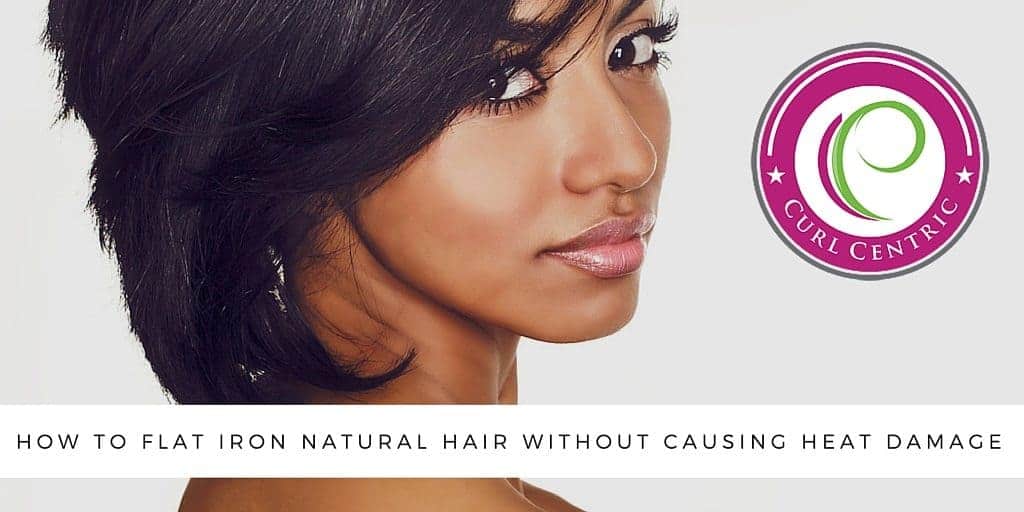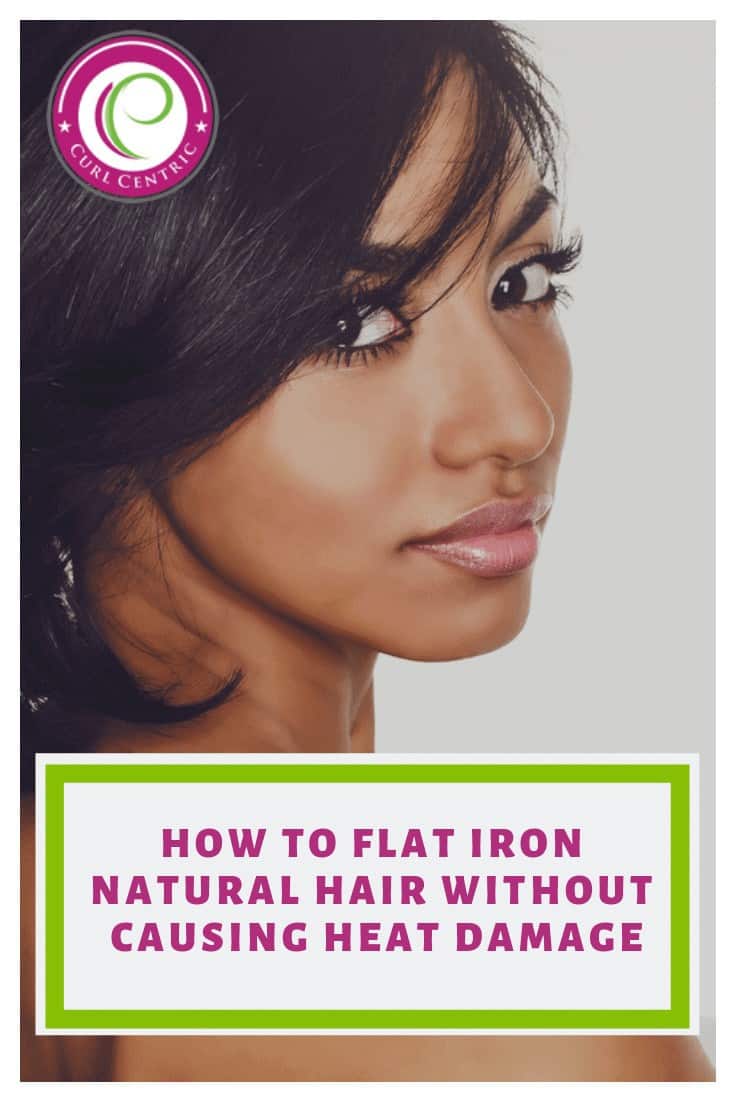
Learning how to flat iron natural hair, without causing heat damage, is a desire of many naturals.
Natural newbies, in particular, often have several questions related to heat damage. These questions are generally due to the horror stories about women damaging their hair.
If you've ever had relaxed hair, be confident that your natural hair is likely much stronger. So, it's better prepared to withstand heat styling.
Table of Contents
How to Flat Iron Natural Hair Without Heat Damage
There are some precautions that you can take to mitigate the chances of heat damage, but it is important to note that heat damage is a real possibility.
Plus, there are many things that we do to our hair that can potentially cause damage. Some examples are provided below:
Shampooing can remove essential proteins from the hair - instead of making it stronger, it can weaken the hair even further.
Excessive combing can lead to hair breakage (source), and some conditioners have chemicals that could make the hair cuticle rise, increasing the likelihood that it will break off.
Shampooing and conditioning are good because our hair needs it to be healthy.
The point is that we should do these things correctly to mitigate damage to the hair. If you're careless about these things, your hair's condition will suffer.

How to Flat Iron Natural Hair Without Causing Heat Damage
Heat has the potential to damage the hair to some extent, but you can reduce the damage by following these tips:
Utilize a Heat Protectant
Fight heat damage with heat protectant products. The chemicals within heat protectants minimize damage caused by heat to the hair strand.
For example, silicone is one of the best ingredients in hair care products when it comes to mitigating heat damage.
Read this article to find the best heat protectant for natural hair. The article mentioned above also provides some great tips on how to flat iron natural hair.
Try to Avoid Bubble Hair
Dripping wet hair is considerably weaker against direct heat. It causes what's referred to as bubble hair.
In simple terms, the dripping water forms bubbles when heated from the inside of your hair, and the steam trying to escape can cause terrible damage to your hair.
Bubble hair is caused by two simple components:
(1) hair that is dripping wet
(2) the heat from a curling or flat iron
The heated water can turn into steam. This steam gets trapped inside our hair in the form of bubbles.
Water begins to turn into steam at approximately 100° Celsius. Most flat irons and other heating appliances usually go beyond this temperature.
In summary, bubble hair isn't a good thing. The person experiencing it will feel the lumps and the roughness when they touch their hair. It also breaks more easily.
A good look at a microscopic level shows that the hair's cortex is invariably damaged by the actual bubble inside the hair.
Going Bone Straight Can Cause Additional Damage
For those with extra curly hair, try to avoid going for bone straight hair - aim for a bit of texture, which provides great volume.
Don't focus too much heat on the kinks in your hair, as it could damage the weakest sections of your hair.
How to Flat Iron Natural Hair with Mahogany Curls
You may say that each person's hair is different. That's correct. So, a range of temperatures is recommended to compensate for different hair types.
The rationale is that what's "low" heat for you can be "high" heat for someone else.
Is Heat Good for Your Hair?
The benefits of heat on your hair depend on how you use it. For example, using a hair dryer (or blow dryer) on the lowest heat settings for about 5 minutes can help coconut oil seep into the hair strands.
Conversely, excessive heat can cause significant damage. Remember that hair has a heat tolerance similar to wool, and both are made up primarily of keratin.
If we assume that the hair is similar to wool, here are some basic temperature guidelines:
- Up to 150°C (302°F): Loosely bound and tightly bound water moisture is lost at this temperature range.
- Between 160°-175°C (320°-347°F): The hair goes through a transitive glass phase. This means that the hair flows and behaves like hot glass. Within this temperature range, your hair becomes very elastic. It can be stretched to great lengths and go back to its normal length. This is referred to as plastic deformation. It should be known that the hair has temporary plasticity, as shown in roller set styles which could produce knot outs and twist outs. While the hair may resemble a normal appearance afterward, that doesn't mean that it goes back to its natural state.
- Between 215°-235°C (419°-455°F): The hair's keratin contains a natural twist known as an alpha helix. This is a component present in all hair types. The temperature in this range melts the helices away, which is unfortunately not reversible.
The optimal temperature for flat ironing your natural hair is the range up to 150°C (302°F). The fact is that you'll need to sacrifice your hair's moisture to make it straight.
If your hair doesn't go straight after a while, please don't continue to turn up the heat. This could lead to significant heat damage.
While learning how to flat iron natural hair is a desire of many naturals, moderation is the key to making sure your hair comes out unscathed.
One good pass of a flat iron in a moderate heat setting should be fine, but do you really have to make 20 passes at high heat settings?
The amount of heat needed will definitely differ from one person to another person. Heat provides a temporary, cosmetic effect whenever you need it.
However, heating the hair on a daily basis isn't recommended. When you use it occasionally and responsibly, it becomes a nice hairstyling option.
- Do Dominican Salons Damage Your Hair?
- How Do You Tell if Your Hair Is Heat Damaged
- What Is a Dominican Blowout on Natural Hair?
- Will Straightening Curly Hair Once Damage It?





